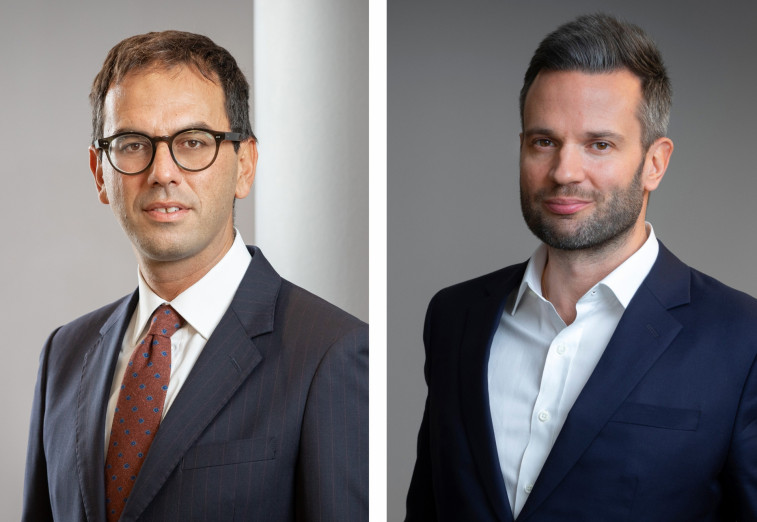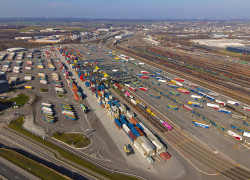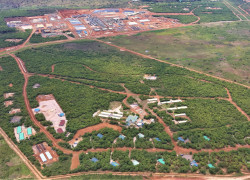The age of disruption: Quintet unveils midyear investment outlook
“Counterpoint” highlights dynamics that will drive the global economy, financial markets and key asset classes over the second half of 2022 and beyond.
In a world characterized by lower growth and higher inflation – fueled by factors such as the war in Ukraine, ongoing supply chain disruptions and lingering COVID risks – investors will continue to grapple with uncertainty. That includes downside risks such as a potential recession in the euro area, especially if the war in Ukraine escalates, and possibly excessive US Federal Reserve tightening, which would put the brakes on the world’s largest economy. Amidst so much uncertainty, investors are understandably nervous about the outlook for corporate profitability and investment returns.
Beyond many of today’s worrying headlines, however, lie significant long-term opportunities linked to this age of disruption. Both Russia’s invasion of Ukraine and the pandemic have spurred reshoring, leading to greater investment in the supply side of domestic economies. Energy insecurity is contributing to the green transition. And despite a rocky first half for technology stocks, themes such as cybersecurity, robotics and automation may go from strength to strength.
Those are the views of Ilario Attasi and Nicolas Sopel, Group Head of Investment Advisors and Senior Macro Strategist, respectively, at Quintet Private Bank. The European wealth manager today released its midyear Counterpoint, its forecast for the global economy, financial markets and key asset classes. In that report – reflecting expectations of worldwide growth of 3.3% in 2022 (down from 5.8% in 2021) and global inflation of 7.8% (up from 4.6% in 2021) – Quintet highlights five core convictions, including the implications for investors.
The firm identifies a range of structural micro and macro trends, which accelerated following the pandemic and Ukraine conflict, and will likely disrupt:
1. COMPANIES | WHEN THE GOING GETS TOUGH
The best companies can thrive during periods of uncertainty, like today, including by planting the seeds for the next season of growth. That requires long-term focus and flexibility, especially financial flexibility. “For those reasons,” said Attasi, “we have a strong preference for companies with strong balance sheets and high levels of free cash flow. Financial strength gives quality growth companies the flexibility and opportunity to continue to invest through a downturn.”
2. SECTORS | RESHORING, RESTORING, REASSURING
Governments and companies are taking active steps to address the frailties exposed by decades of offshoring and imbalanced economics. “This will spur significant investments across strategically important industries, leading to more robust supply chains, improved national security and greater energy independence,” said Sopel. “In emerging markets, China has long focused on rebalancing its economy, increasing its domestic focus and upgrading its manufacturing sector on the value chain.” For Sopel, these trends are likely to be important drivers of equity returns over the coming year.
3. THE ECONOMY | LEARNING TO LIVE WITH INFLATION
Global inflation is expected to reach 7.8% for the full year, then slow to roughly 5% in 2023. Even if that is still above levels during the pre-COVID decade – which was characterized by fiscal austerity and balance-sheet repair – central banks should be able to slow the pace of tightening next year, following several rate increases this year. “Over the longer term,” said Sopel, “any inflation coming from the green transition and more local supply chains is unlikely to be met with significant rate rises.”
4. ENERGY | RENEWABLE AND RELIABLE
Both fossil fuel and clean energy themes have outperformed the market since the February invasion of Ukraine, a de-risking approach that makes sense in a context where markets are focused on the short-term need to secure energy supplies. Over the longer term, however, investors will increasingly focus on cleantech as enthusiasm for fossil fuels diminishes. “Clean energy equities have outperformed the market since the adoption of the Paris Climate Agreement in 2015,” noted Attasi. “This decade, the divergence between clean energy equities and fossil fuel equities, which underperformed over the last decade, could be even more pronounced.”
5. TECHNOLOGY | POWERING THROUGH THICK AND THIN
Global technology stocks may be on track for their largest annual decline in 14 years, but long-term investors have good reason to continue to overweight technology-linked themes, especially through a diversified approach. “The world’s biggest challenges – climate change, energy dependence, pandemic risks, food security and supply chain resilience – can all potentially be addressed through technology,” Sopel said. “Meanwhile, some of the most exciting opportunities – the metaverse, artificial intelligence, autonomous vehicles and genomics – are also inextricably linked to technology. The long-term outlook for tech and innovation remains robust.”
Quintet’s full Counterpoint 2022 Midyear Investment Outlook is available at: Quintet 2022 Midyear Outlook
Communiqués liés
RSA launches technology and management liability insurance s...
RSA Luxembourg, part of Intact Insurance Specialty Solutions, today announces th...
Lancement d'une nouvelle connexion intermodale entre Bettemb...
CFL multimodal a le plaisir d'annoncer le lancement de sa nouvelle connexion i...
Experts from LUNEX award first micro-credentials in Rwanda o...
The Rwanda Ministry of Education (MINEDUC) formally inaugurated Syllabi, a publi...
ERG Notes that ENRC Secures Landmark Victory as Court of App...
Eurasian Resources Group (ERG), a leading diversified natural resources group he...
LetzToken et La Vie est Belle annoncent leur partenariat ouv...
«?LetzToken?», plateforme de tokenisation pionnière basée à Luxembourg, et ...
ERG announces a Pre-Export Finance Facility Agreement based ...
Eurasian Resources Group (“ERG”, “The Group”), a leading diversified nat...
Il n'y a aucun résultat pour votre recherche







